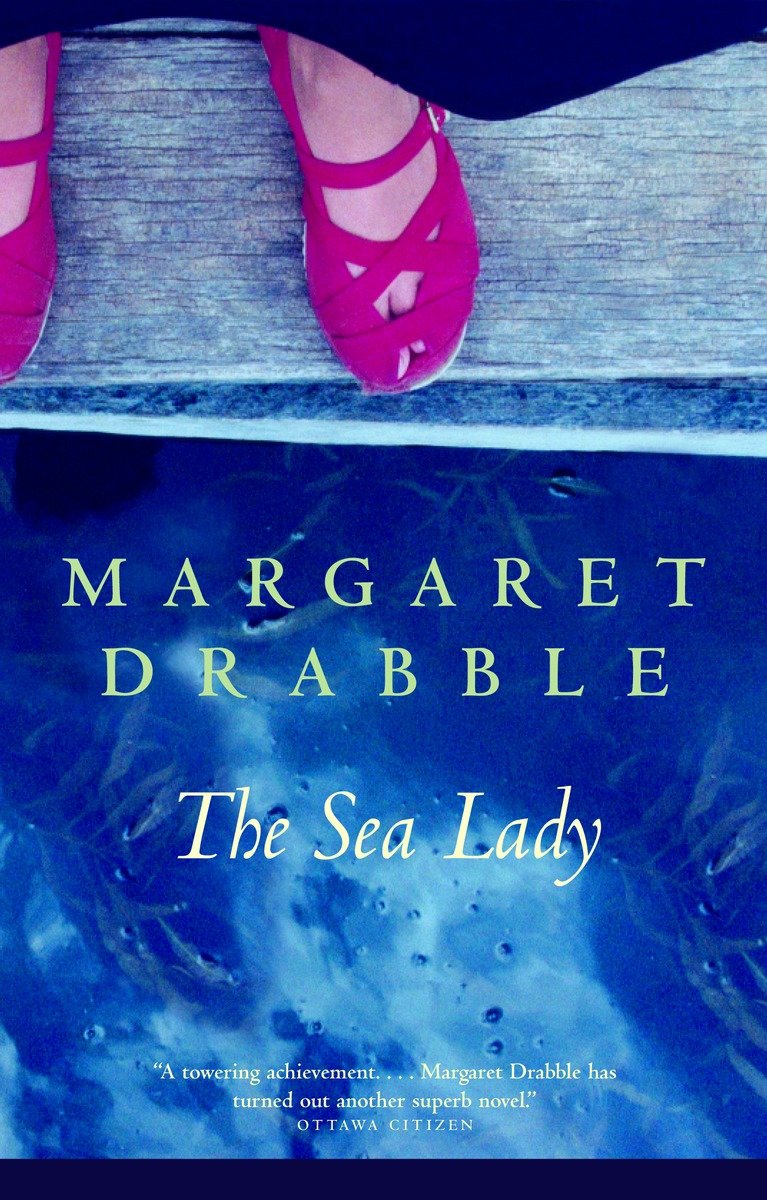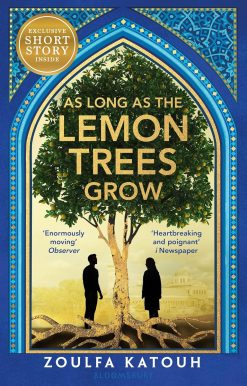No gift registry found click here to create new registry
Cart contain Gift Registry Items cannot add products
The Sea Lady
16.00 JOD
Please allow 2 – 5 weeks for delivery of this item
Add to Gift RegistryDescription
Margaret Drabble returns with a virtuoso novel set in present-day England.Two distinguished guests are travelling separately toward a ceremony where they will meet for the first time in three decades. Both are apprehensive, as they review the successes and failures of their public life, and their secret history. Humphrey and Ailsa met as children, by the grey northern sea to which they are returning. Humphrey was already a serious child, drawn toward the underwater world of marine biology, but there were as yet few signs of Ailsa’s dazzling transformation into a flamboyant feminist celebrity. The novel traces the evolution of their careers and their passionately entangled relationship, and brings them together again to see what they will make of their past, and in what spirit they will be able to face the future.In this taut and elegiac novel, Margaret Drabble examines the ways in which place, chance, and time merge to make us what we are.
Additional information
| Weight | 0.36 kg |
|---|---|
| Dimensions | 1.73 × 13.9 × 21.19 cm |
| PubliCanadation City/Country | Canada |
| book-author1 | |
| Format | Paperback |
| Language | |
| Pages | 352 |
| Publisher | |
| Year Published | 2008-1-8 |
| Imprint | |
| ISBN 10 | 0771029098 |
| About The Author | Margaret Drabble’s internationally celebrated novels include The Radiant Way, A Natural Curiosity, The Gates of Ivory, The Peppered Moth, The Seven Sisters, and The Red Queen. She is also the editor of The Oxford Companion to English Literature. She lives in London, England. |
“Margaret Drabble is a writer of shining wit and splendid seriousness.” — Alice Munro“Margaret Drabble is the voice of contemporary woman and English novelist par excellence.” — NOW magazine“Margaret Drabble has defined our times better than any other woman novelist. . . . ” — Chatelaine |
|
| Excerpt From Book | The PresentationThe winning book was about fish, and to present it, she appeared to have dressed herself as a mermaid, in silver sequinned scales. Her bodice was close-fitting, and the metallic skirt clung to her solid hips before it flared out below the knees, concealing what might once have been her tail. Her bared brown shoulders and womanly bosom rose powerfully, as she drew in her breath and gazed across the heads of the seated diners at the distant autocue. She gleamed and rippled with smooth muscle, like a fish. She was boldly dressed, for a woman in her sixties, but she came of a bold generation, and she seemed confident that the shadowy shoals of her cohort were gathered around her in massed support as she flaunted herself upon the podium. She felt the dominion. It pumped through her, filling her with the adrenalin of exposure. She was ready for her leap.The silver dress must have been a happy accident, for until a few hours earlier in the day nobody knew which book had carried off the trophy. The five judges had met for their final deliberations over a sandwich lunch in a dark anachronistic wood-panelled room off an ill-lit nineteenth-century corridor. The result of their conclave was about to be announced. Most of the guests, including the authors, were as yet ignorant of the judges’ choice.Ailsa Kelman’s wardrobe could hardly have been extensive enough to accommodate all six of the works upon the shortlist, a list which included topics such as genetically modified crops, foetal sentience and eubacteria: subjects which did not easily suggest an elegant theme for a couturier. Would it be suspected that she, as chair of the judges for the shortlist, had favoured a winner to match her sequinned gown, and had pressed for its triumph? Surely not. For although she was derided in sections of the press as an ardent self-publicist, she was also known to be incorruptible. The sea-green, silvery, incorruptible Ailsa. And her fellow-judges were not of a cal¬i¬bre to submit to bullying or to manipulation.The venue of the dinner might also shortly be observed to be something of a happy accident. The diners were seated at elegantly laid little round tables beneath a large grey-blue fibreglass model of a manta ray, which hung suspended above them like a primeval spaceship or an ultra-modern mass-people-carrier. They could look nervously up at its grey-white underbelly, at its wide wings, at its long whip-like tail, as though they were dining on the ocean floor. Like the costume of Ailsa Kelman, this matching of winner and venue could not have been planned. The museum was a suitable venue for a prize for a general science book with a vaguely defined ecological or environmental message, but the diners could as easily have been seated in some other hall of the huge yellow-and-blue-brick Victorian necropolis, surrounded by ferns or beetles or minerals or the poignant bones of dinosaurs. The dominant theme of fish had prevailed by chance.The programme was going out live, and noses had been discreetly powdered, hair adjusted, and shreds of green salad picked from teeth. Now the assembly fell silent for Ailsa’s declaration. Although the winner did not yet know the result, the cameramen and women did, and some of the more media-wise of the guests were able to read the imminent outcome from their disposition. Great sea snakes of thick cable twisted across the floor and under the tables, and thinner ropes of wire clambered up like strangling weeds on to the platform and connected themselves to microphones and control buttons. The technology was at once primitive and modern, cumbersome and smart. The platform on which Ailsa stood was temporary and precarious, and the fake grass matting that covered it concealed a hazardous crack.Posture, Ailsa, posture, said Ailsa Kelman to herself, as she straightened her shoulders, drew in another deep breath, and, upon cue, began to speak. Her strong, hoarse and husky voice, magnified to a trembling and intimate timbre of vibration by the microphone, loudly addressed the gathering. The audience relaxed, in comfortable (if in some quarters condescending) familiarity: they knew where they were going when they were led onwards by this siren-speaker. They felt safe with her expertise. She took them alphabetically through the shortlist, travelling rapidly through the cosmos and the bio¬sphere, sampling dangerous fruits, appraising the developing human embryo, interrogating the harmless yellow-beige dormouse, swimming with dwindling schools of cod and of herring, burrowing into the permafrost, and plunging down to the black smokers of the ocean floor. She summoned up bacteria and eubacteria and ancient filaments from the Archaean age, and presented her audience with the accelerating intersexuality of fish.Behind her, around her, above her, in the wantonly and wastefully vast spaces of the Marine Hall, swam old-fashioned tubby three-dimensional life-size models of sharks and dolphins, like giant bath toys, and the more futurist magnified presences of plankton and barnacles and sea squirts and sea slugs. Ailsa Kelman shimmered and glittered as she approached her watery climax. And suddenly, all the foreplay of the foreshore was over: Ailsa Kelman declared that the intersexuality of fish had won! The hermaphrodite had triumphed!Hermaphrodite: Sea Change and Sex Change was the winning title. The winning author was Professor Paul Burden, from the EuroBay Oceanographic Institute in Brittany and the University of California at San Diego.Applause, applause, as a tall bearded marine biologist picked his way over the seabed of Marconi cables towards the platform to receive his cheque and present his weathered outdoor face to the bright unnatural lights. A television person conducted the applause, encouraging a crescendo, insisting on a diminuendo, attempting, not wholly successfully, to impose a silence. Some members of the captive audience were by now quite drunk, and, deprived of the false concentration of suspense, were growing restless.The hermaphrodite had won!‘This is a brilliantly written survey of gender and sex in marine species . . . prefaced by a poetic evocation of a distant and placid asexual past . . . covering bold hypotheses about the evolutionary origins of sexual reproduction, followed by startling revelations about current female hormone levels, current male infertility, and rising sexual instability caused by POPs and other forms of chemical hazards . . .Few were listening to the formal citation. However, because of the cameras and the controlling conductor, nobody could yet move. They had to sit and pretend to follow Ailsa Kelman’s eulogy.The jaws of sharks, fixed in the gape of their everlasting grins, displayed their triple rows of teeth above the diners.Now the prize-winner was saying his few words. Oddly, he pronounced the main word of his title with an extra syllable, an unusual fifth syllable. ‘Herm-Aphrodite,’ he said, conjuring forth an intersexed Venus-Apollo from the waves, a goddess or a god of change. He spoke of intersexed males and females, of transitionals. ‘When I was young, he was saying, hermaphrodites were more common in the invertebrate world. My first published paper was on the life cycle of the marine shrimp . . .’Ailsa Kelman stood on the platform, back straight, breathing evenly and listening hard. She smiled rigidly outwards and onwards as the marine biologist spoke. Professor Burden was speaking very well. He was a proper scientist, a hard scientist, but he was also a literary man, and keen to prove it. Now he had moved on to Ovid and his Metamorphoses and why they had become so fashionable at the beginning of the third millennium. He mentioned the nymph Salmacis and Hermaphrodite, joined together in one body in the fountain of life. The question of the mutability of gender which had so intrigued the ancients, he was saying, had now become a serious item on the very different agenda of evolutionary biology . . .Ailsa found it hard to concentrate on the content of his speech, elevated and displayed to the public view as she was, as she so often was. But she tried. She was dutiful, in her fashion. She was a professional.Public occasions enthralled Ailsa Kelman. She loved their special effects, their choreography, their managed glamour, their moments of panic, their humiliations, their heterogeneity, their ephemeral and cynical extravagance. She rose to these occasions and blossomed in the surf of them. She was in her element here. |
Only logged in customers who have purchased this product may leave a review.
Related products
-
On backorder 2-5 Weeks to Arrive
Add to Gift Registry110.00 JOD -
On backorder 2-5 Weeks to Arrive
Add to Gift RegistryThe Art of Couture Sewing
Paperback
90.00 JOD -
On backorder 2-5 Weeks to Arrive
Add to Gift RegistryAs Long As the Lemon Trees Grow
Paperback
8.99 JOD -
On backorder 2-5 Weeks to Arrive
Add to Gift Registry36.99 JOD






Reviews
There are no reviews yet.